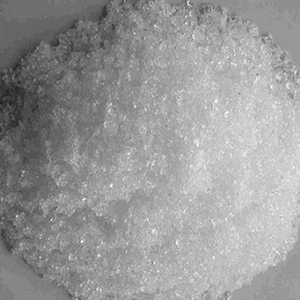
Synonyms: Ammonium Phosphate,
CAS Number: Monoammonium Phosphate 7722-76-1,
Molecular Weight: 115.04,
Chemical Formula: NH4H2PO4
EINECS EC Number: 200-662-2,
FEMA: ----,
CAS Number: Diammonium Phosphate 7783-28-0,
EINECS EC Number: ---,
HS Code ---**;
Molecular Weight 132.06,
Molecular Formula: (NH4)2HPO4
Monoammonium phosphate
also called Mono ammonium phosphate or Ammonium dihydrogen phosphate, NH4•H2PO4, is formed when a solution of phosphoric acid is added to
ammonia until the solution is distinctly acid. It crystallizes in quadratic prisms. Monoammonium phosphate is often used in the blending of dry agricultural fertilizers.
It supplies soil with the elements nitrogen and phosphorus in a form which is usable by plants. The compound is also a component of the ABC powder in some dry chemical
fire extinguishers. This substance is also supplied in a jade green or aquamarine crystal growing box kit for kids.
Diammonium hydrogen phosphate
also called Di ammonium phosphate or di ammonium phosphate, (NH4)2HPO4, is formed by evaporating a solution of phosphoric acid with
excess of ammonia. It crystallizes in large transparent prisms, which melt on heating and decompose, leaving a residue of metaphosphoric acid, (HPO3).
Uses
Diammonium phosphate (DAP)
is used as a fertilizer and a fire retardant. When applied as plant food, DAP temporarily increases the soil pH (more basic),
but over a long term the treated ground becomes more acidic than before upon nitrification of the ammonium. DAP is incompatible with alkaline chemicals because its
ammonium ion is more likely to convert to ammonia in a high-pH environment. As a flame retardant, it lowers the combustion temperature of the material, decreases
maximum weight loss rates, and causes an increase in the production of residue or char.
DAP is also used as a yeast nutrient in winemaking and brewing mead; as an additive in some brands of cigarettes purportedly as a nicotine enhancer; to prevent afterglow in matches, in purifying sugar; as a flux for soldering tin, copper, zinc and brass; and to control precipitation of alkali-soluble and acid-insoluble colloidal dyes on wool.